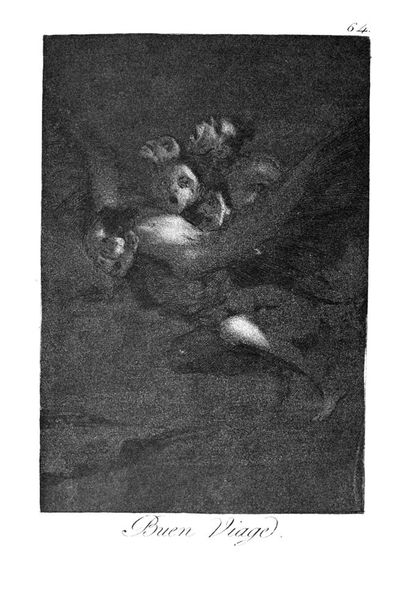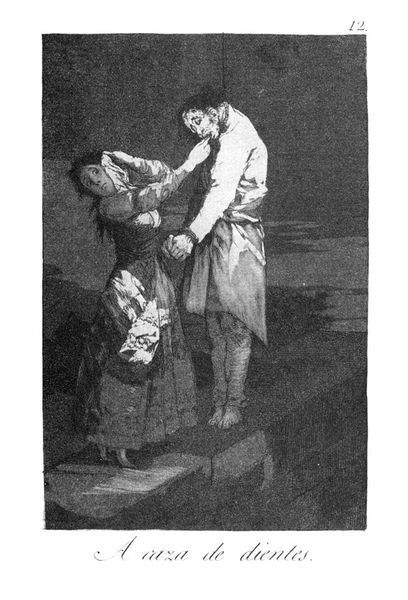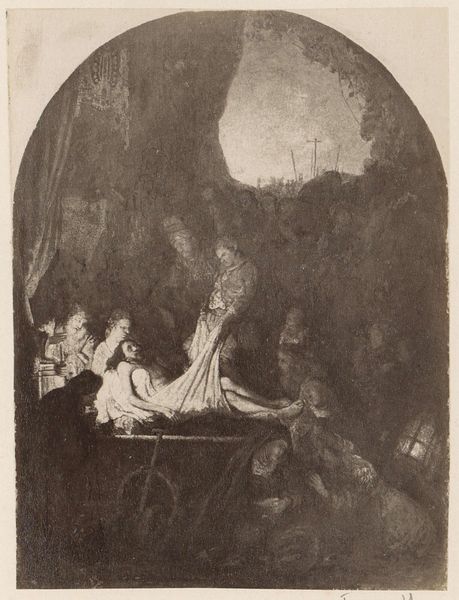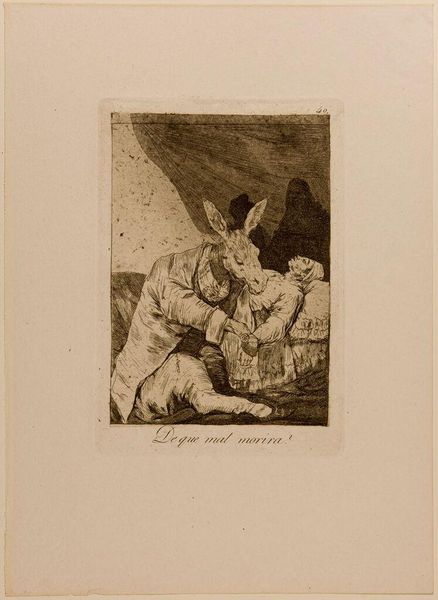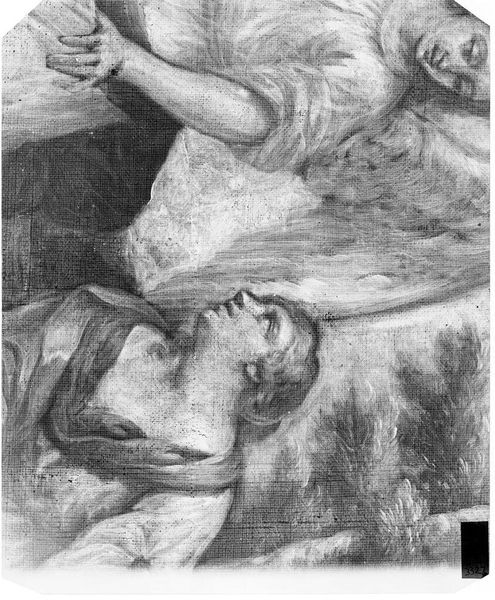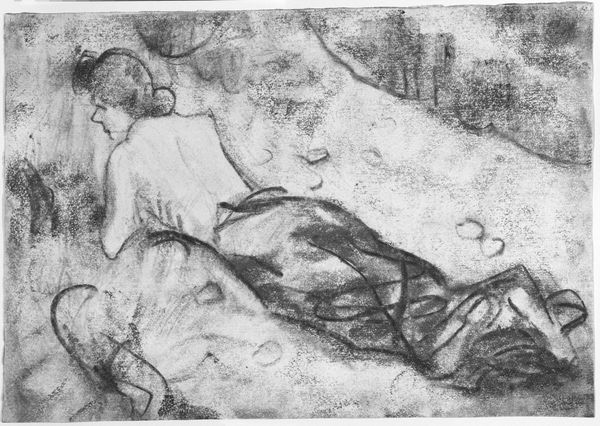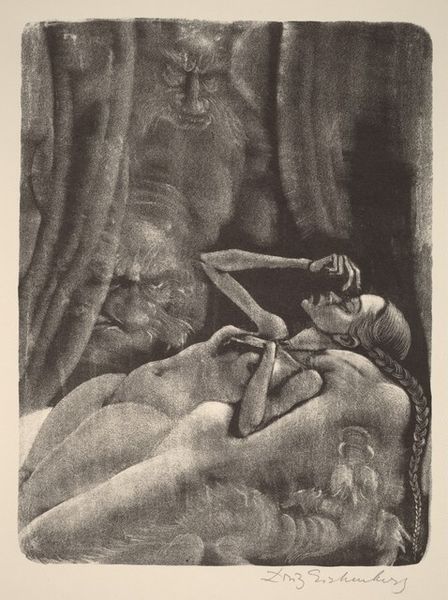
print, etching, intaglio
#
allegories
#
allegory
#
narrative-art
# print
#
etching
#
intaglio
#
figuration
#
romanticism
#
chiaroscuro
#
line
#
history-painting
Dimensions: 21.5 x 15.5 cm
Copyright: Public domain
Editor: This intaglio print by Francisco de Goya, made in 1799, is called "Who could believe it!". The piece makes me feel unsettled, perhaps due to the stark contrast between light and shadow and the distorted figures. What's your take on this dramatic artwork? Curator: Goya was deeply concerned with the socio-political issues of his time, especially the corruption and superstition prevalent in Spanish society. Looking at this image, particularly through the lens of history, one could see this scene as an allegory of that moral decay. Notice the grotesque features, almost caricatures of humans – what could that possibly imply in the political landscape? Editor: Perhaps a critique of those in power? Their ugliness reflected in their actions? Curator: Exactly! The "black paintings", the broader context in which this etching appears, suggests a world collapsing under its own weight. Moreover, think about the rise of Romanticism: it encouraged the examination of intense emotions and the grotesque. What do you make of how the piece fits within the cultural norms of the period? Editor: I guess the raw emotion and unflinching portrayal of ugliness challenged the established artistic conventions. It wasn't about idealization, but rather exposing a darker truth? Curator: Precisely! This print served not just as an aesthetic object but a statement— a voice in the rising chorus demanding social change, which aligns perfectly with Goya's broader body of work, known for challenging societal norms. Editor: So, it's less a depiction of a literal scene and more of a symbolic representation of societal issues... I hadn't thought about it that way. Curator: Understanding the historical context unlocks new depths in artwork. Goya's ability to embed social commentary in such visually arresting imagery makes him exceptionally relevant even today. Editor: Absolutely, I’ll definitely approach art with a more critical, historical perspective now. Thanks!
Comments
No comments
Be the first to comment and join the conversation on the ultimate creative platform.
